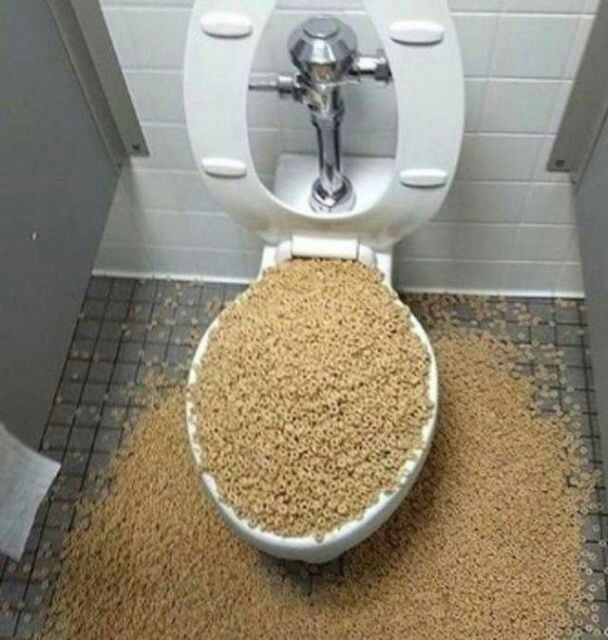Is it Suitable to Dispose of Food Down the Toilet?
Is it Suitable to Dispose of Food Down the Toilet?
Blog Article
How do you really feel about Think Twice Before Flushing Food Down Your Toilet?

Introduction
Lots of people are usually faced with the issue of what to do with food waste, specifically when it comes to leftovers or scraps. One common inquiry that emerges is whether it's all right to purge food down the commode. In this post, we'll explore the reasons individuals could consider flushing food, the effects of doing so, and alternative techniques for appropriate disposal.
Reasons why individuals might take into consideration purging food
Absence of recognition
Some individuals may not know the potential harm caused by flushing food down the bathroom. They may mistakenly think that it's a safe practice.
Benefit
Purging food down the bathroom might look like a quick and very easy remedy to throwing away undesirable scraps, especially when there's no neighboring trash bin readily available.
Laziness
In many cases, individuals may merely select to flush food out of large laziness, without considering the effects of their activities.
Repercussions of flushing food down the commode
Ecological impact
Food waste that ends up in waterways can contribute to contamination and injury aquatic ecological communities. Additionally, the water utilized to flush food can strain water resources.
Plumbing issues
Purging food can lead to blocked pipes and drains pipes, triggering expensive plumbing repairs and hassles.
Types of food that should not be purged
Fibrous foods
Foods with fibrous textures such as celery or corn husks can get entangled in pipes and create blockages.
Starchy foods
Starchy foods like pasta and rice can soak up water and swell, leading to obstructions in pipelines.
Oils and fats
Greasy foods like bacon or cooking oils need to never be flushed down the commode as they can strengthen and cause obstructions.
Proper disposal techniques for food waste
Utilizing a waste disposal unit
For homes geared up with waste disposal unit, food scraps can be ground up and flushed with the pipes system. Nonetheless, not all foods appropriate for disposal in this fashion.
Recycling
Particular food product packaging products can be recycled, minimizing waste and decreasing environmental impact.
Composting
Composting is an environmentally friendly method to deal with food waste. Organic materials can be composted and made use of to enhance soil for horticulture.
The significance of correct waste monitoring
Minimizing ecological damage
Proper waste monitoring practices, such as composting and recycling, assistance reduce air pollution and preserve natural resources for future generations.
Safeguarding plumbing systems
By preventing the technique of flushing food down the toilet, home owners can protect against pricey plumbing repairs and preserve the honesty of their pipes systems.
Conclusion
In conclusion, while it might be tempting to purge food down the bathroom for comfort, it is essential to comprehend the prospective consequences of this activity. By taking on appropriate waste management techniques and dealing with food waste responsibly, individuals can add to healthier pipes systems and a cleaner environment for all.
FLUSH FOOD DOWN THE TOILET?
FLUSHING FOOD CAN CAUSE BLOCKED DRAINS IN YOUR HOME
All of the plumbing fixtures in your home are connected to the same sewer pipe outside of your home. This outdoor sewer pipe is responsible for transporting all the wastewater from your home to the Council sewer mains. Even small pieces of food that go down the kitchen sink can cause problems for your sewer. It should therefore be obvious that flushing larger bits of food, such as meat, risks a clog in either the toilet itself or the sewer pipes. Flushing greasy food is even more problematic because oil coagulates when it cools, coating the interior lining of your pipes.
THE TOILET IS NOT A BIN
Food isn’t the only thing that people shouldn’t be flushing down the toilet. People use the toilet to dispose of all kinds of things such as tampons, makeup wipes, dental floss, kitty litter and even underwear. Water goes to great lengths to educate residents about the high costs and stress placed on wastewater treatment systems simply from people flushing the wrong stuff down the toilet. It costs taxpayers millions of dollars each year, and homeowners thousands in blocked drain repairs.
FLUSHING FOOD IS A WASTE OF WATER
Flushing food is a waste of our most precious resource - water. In June this year Level 1 water restrictions were introduced to protect water supply from drought conditions. Much of New South Wales continues to be affected by prolonged drought with recent figures revealing up to 97 per cent of the state remains in drought. Depending on whether you have a single or dual flush toilet, every single flush uses between five and 11 litres of water. In the current climate this is a huge amount of water to be wasting on flushing food that should be placed in the bin (or better yet, the compost).
https://www.jabplumbingsolutions.com.au/blog/can-you-flush-food-down-the-toilet

I was brought to that editorial about Is it safe to flush food (especially rice) down the toilet? through a friend on a different website. Sharing is caring. Who knows, you may very well be doing someone a favor. Thank you so much for your time invested reading it.
Visit Homepage Report this page